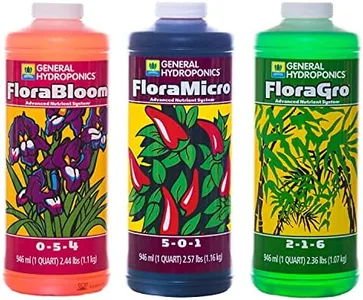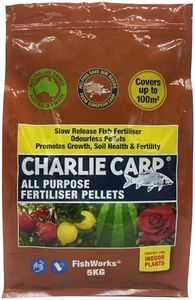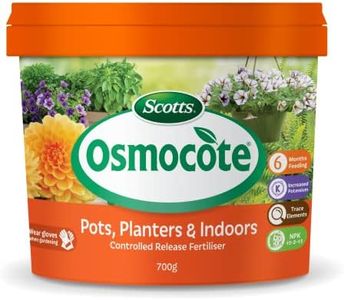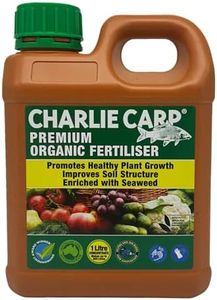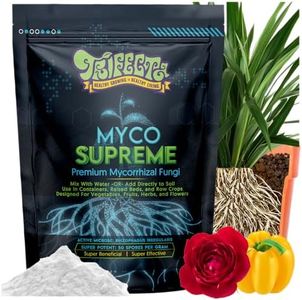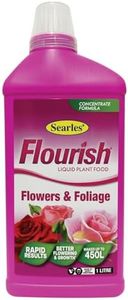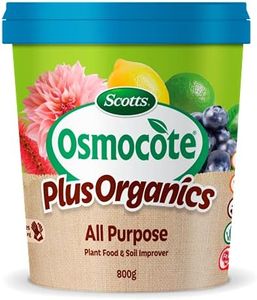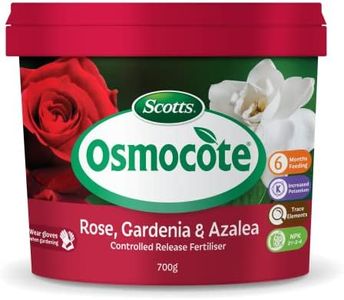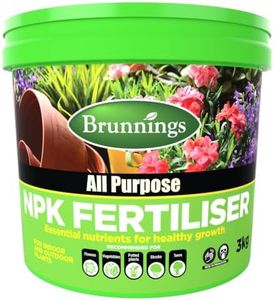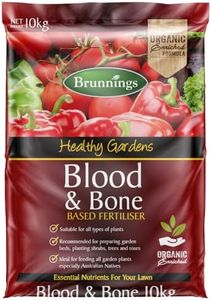We Use CookiesWe use cookies to enhance the security, performance,
functionality and for analytical and promotional activities. By continuing to browse this site you
are agreeing to our privacy policy
10 Best Flower Fertilizers
From leading brands and best sellers available on the web.Buying Guide for the Best Flower Fertilizers
Choosing the right flower fertilizer can make a big difference in how healthy and beautiful your flowers become. Fertilizers provide essential nutrients that help plants grow strong stems, rich leaves, and vibrant blooms. Understanding the different components and types of fertilizers helps you pick the one that matches your specific garden needs and the kinds of flowers you’re growing.NPK RatioNPK stands for Nitrogen (N), Phosphorus (P), and Potassium (K) – the three main nutrients in fertilizers. Nitrogen helps with leaf and stem growth, phosphorus supports root and flower development, and potassium aids overall plant health and resistance. NPK is always shown as three numbers, like 10-10-10. Lower values (for example, 5-10-5) are good for delicate flowers or boosting blooms, while balanced numbers suit most general gardening. Consider what your flowers need most: for lush, leafy plants, go higher on nitrogen; for blooming, pick a formula with more phosphorus.
Type of Fertilizer (Granular, Liquid, Slow-Release)Fertilizers come in different forms: granular (small pellets), liquid (concentrated or ready-to-use), and slow-release (coated granules that break down over time). Granular fertilizers are easy to spread and work well for garden beds. Liquid types are fast-acting and useful for quick results, like giving a boost during flowering season. Slow-release types are convenient since you apply them less often and they supply nutrients gradually. If you prefer less frequent work and steady growth, slow-release is a good choice. For fast results or container plants, liquid might be best.
Nutrient Content (Micronutrients)Besides the major nutrients, fertilizers often contain micronutrients like iron, magnesium, calcium, and zinc which are vital for plant health in small amounts. Some flowers are sensitive and need extra micronutrients, especially if your soil is lacking. Check the label for added micronutrients if you notice problems like yellowing leaves or poor blooms, or if you want to cover all your plants’ nutritional needs.
Organic vs SyntheticOrganic fertilizers are made from natural materials such as compost, bone meal, or manure, and tend to work more slowly and improve soil quality over time. Synthetic fertilizers are chemically made and give fast, targeted nutrient boosts. Organic types are better if you want to improve your soil and garden sustainability, while synthetics are a good fit for fast, predictable results. Consider your gardening philosophy and how much time you want to invest in soil health.
Application MethodFertilizers can be applied in different ways: mixed into the soil, sprinkled on the surface, or diluted with water and poured around the plants. Some are even made for foliar feeding, meaning sprayed on the leaves. Consider how you like to garden—if you water by hand often, a water-soluble fertilizer makes sense. For larger beds, granular or slow-release is more convenient.


